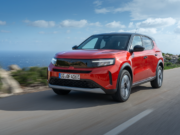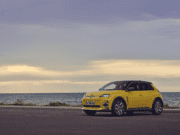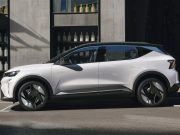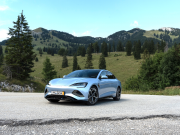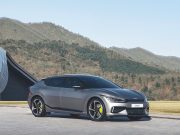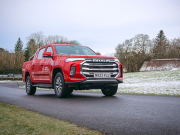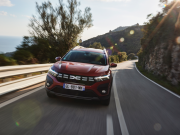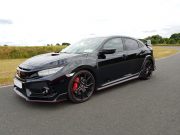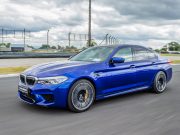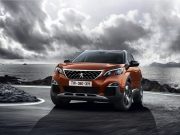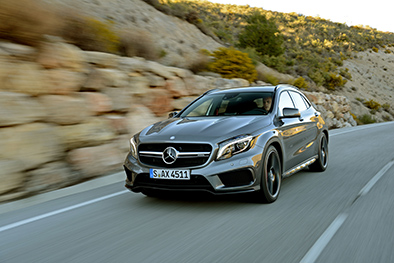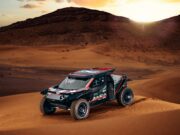
After Audi presented extensive upgrades for the A3 and S3, in the spring, the A3 Sportback TFSI e now follows with the plug-in hybrid more powerful and more efficient than before.
New turbo petrol engine and optimised electric motor as powerful duo
The new turbocharged petrol engine and the electric motor with increased power density are at the heart of the drive system. The 1.5 TFSI evo2 replaces the previous 1.4 TFSI and boasts a wide range of high-tech features. In addition to optimising combustion chamber cooling, the symbiosis of the turbocharger with variable turbine geometry and the Miller cycle, as well as the early closing of the intake valves, ensures a higher compression ratio. The ratio is now 11.5:1, compared to 10:1 in the 1.4 TFSI. Thanks to this combustion process, the new unit operates with a high degree of efficiency, reducing fuel consumption and emissions. Injection takes place at a pressure of up to 350 bar. By comparison, the 1.4 TFSI reached a maximum of 200 bar. Plasma-coated cylinder liners reduce internal friction in the new engine. Pistons with cast-in cooling channels optimise combustion.
The electric drive is provided by a permanently excited synchronous motor, which now delivers 85 kW and 330 Nm of torque. As with its predecessor, it is integrated into the housing of the six-speed S tronic, which is now equipped with a more robust gearbox bearing to cope with the higher system output. It transfers the torque from the two engines to the front axle. The dual-clutch transmission has an electric oil pump that ensures the change of gears and oil supply even when the TFSI is temporarily deactivated.
Battery capacity and energy content of the HV modules doubled
The gross capacity of the high-voltage battery is now 25.7 kWh and has, therefore, almost doubled with nearly identical dimensions to the predecessor model. The net capacity is 19.7 kWh. Its 96 prismatic cells, which are divided into four modules, store almost 50 percent more energy than before: thanks to optimised cell chemistry and a better package, the charge quantity of the modules is now 73 instead of 37 ampere hours. The developers have thus increased the electric range to up to 141 kilometers in the WLTP cycle. A dedicated cooling circuit ensures the battery temperature is maintained in the optimum range.
Intelligent drive management for maximum efficiency
The compact plug-in hybrid‘s drive management is designed for high efficiency. Starting is always electric, down to -28° C. The driver can prioritise the electric drive with the EV button in the switch panel or in the MMI, which enables the vehicle to operate like a fully electric model. In “Auto Hybrid” mode, the primary operating mode, the combustion engine and electric motor share the work intelligently – purely electric driving at low speeds, with the TFSI engine taking priority at higher speeds and often both drives together. Depending on the situation, the A3 Sportback TFSI e can coast, recuperate – both in thrust and braking – or boost together with the electric motor and TFSI. In addition, the hybrid management system keeps the battery charge level constant to save enough electrical energy for later use.
Recuperation via the steering wheel paddles
When you take your foot off the accelerator pedal, the A3 Sportback TFSI e coasts with the engines switched off, or the electric motor recuperates in overrun mode, depending on the driving situation. When braking, the electric motor takes over the deceleration alone up to around 0.3 G and thus covers the vast majority of all braking processes in everyday driving. The hydraulic wheel brakes only come into play when you step harder on the brake pedal. The transition is almost imperceptible, and recuperation remains active. When braking, the electric motor can recover up to 43 kW of power. Based on all-electric models, the steering wheel paddles are now used to control the degree of recuperation in EV mode for the first time. The optimum driving level is set in the background.
More power when boosting
The A3 Sportback TFSI e reveals its sporty potential in shift program S of the dual-clutch transmission. In “Auto Hybrid” mode, the drive calls up the full system power and releases the boost power in acceleration phases during kickdown. In the A3 Sportback 40 TFSI e, this amounts to 40 kW and is available for up to 15 seconds or even up to 18 seconds under optimum conditions.
DC fast charging function with up to 50 kW**
For the first time, Audi is offering DC charging at fast-charging stations for a plug-in hybrid model. The A3 Sportback TFSI e uses DC charging with up to 50 kW** and thus allows comfortable traveling with electric drive. This means a battery discharged to 10 percent can be recharged to 80 percent** in less than half an hour. In addition, it is possible to charge at AC charging points such as a wallbox or municipal charging stations with three-phase charging at up to 11 kW. The charging process takes 2.5 hours. The necessary Mode 3 cable is included as standard.
Specifically tuned chassis
Compared to the conventionally powered A3, the axle load distribution in the plug-in hybrid is slightly more rear-heavy, with 55% on the front axle and 45% on the rear axle. This is due to the lithium-ion battery, which is located under the vehicle floor in the area of the rear seat bench. The suspension and dampers have, therefore, been specifically tuned. The combination of slightly increased spring rates and a somewhat sportier damping behavior ensures high ride quality and dynamics in equal measure. The electromechanical steering works sensitively and provides support depending on the driving speed. It offers a precise steering feel at high speeds; when parking the A3 Sportback TFSI e feels very easy to handle. Progressive steering with a variable ratio depending on the steering angle is available as an option for an even more agile driving experience.
Available at prices from €51,410
Prices for the A3 Sportback 40 TFSI e start at €51,410 and orders can be placed from Mid-October 2024.



